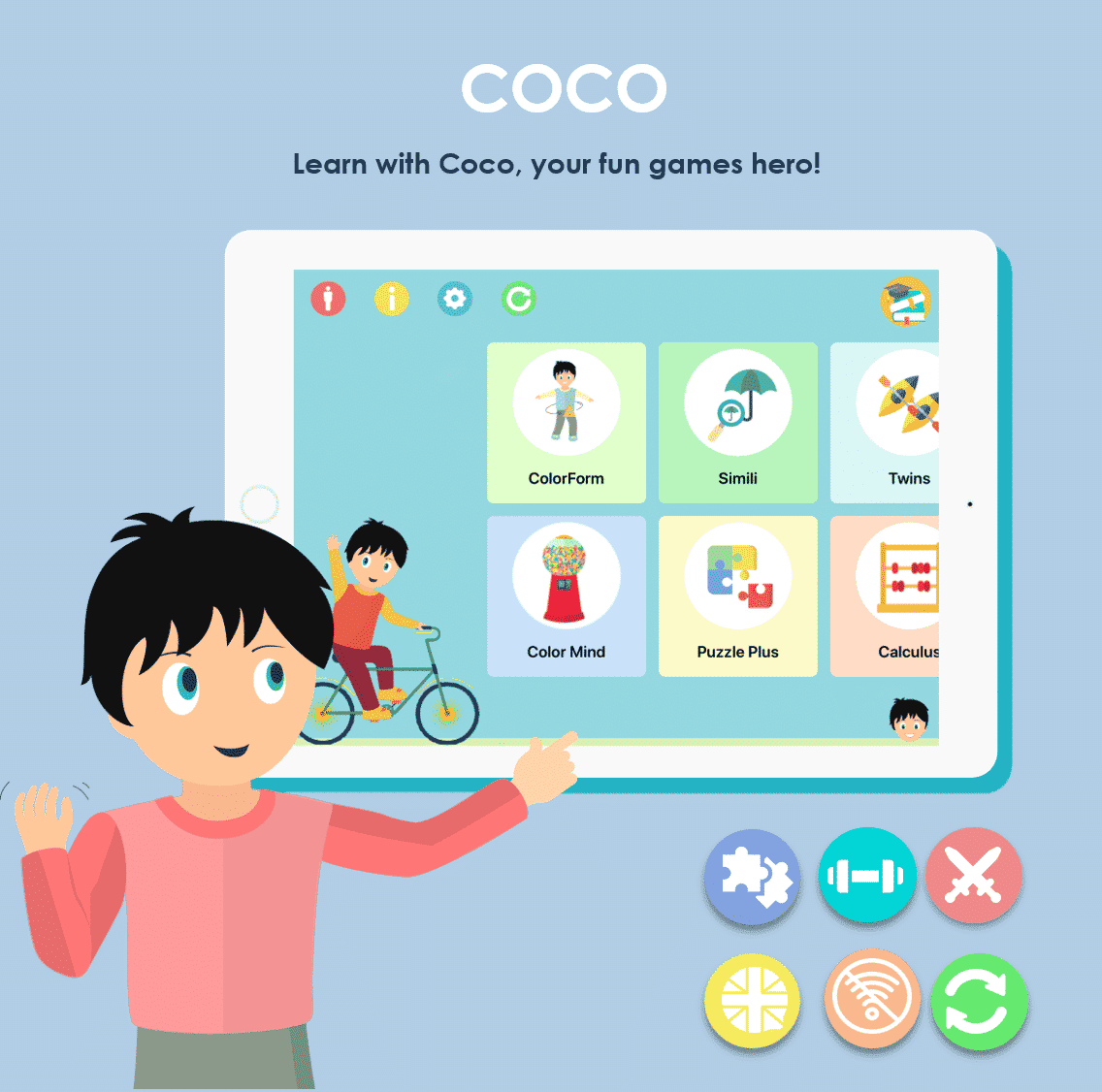Nowadays, screens are omnipresent in our daily lives. Children are particularly exposed to these technologies, whether they are playing video games, watching online videos or chatting with friends on social networks. However, this excessive use of screens can have negative consequences on their health and well-being, particularly by reducing their level of physical activity.
Numerous studies have shown that prolonged screen use is associated with a decrease in physical activity in children. Spending too much time in front of a screen can lead children to engage in sedentary behaviors, such as sitting or lying down, instead of physical activities. This can have adverse effects on their health, such as obesity, musculoskeletal disorders and sleep problems.
How can screen time affect children’s physical activity?
Negative impact
Excessive screen time can have a negative impact on children’s physical activity. Children often spend long periods of time in front of screens, which can lead to sedentary behaviors and reduced physical activity. For example, a child who spends several hours a day playing video games or watching videos online may not have enough opportunities to move and exercise.
Sleep
In addition, screen time can also affect children’s sleep quality. Screens emit blue light that can disrupt the sleep cycle, leading to sleep problems and daytime fatigue, which in turn can affect their ability to be physically active during the day.
Communication
In addition, excessive screen use can also affect children’s social and emotional skills, leading them to prefer to stay indoors and interact with screens rather than with their peers and outdoor environment. This can lead to a lack of motivation to get outside and play, thus reducing their level of physical activity.
The food
Finally, children who spend too much time in front of screens may be more likely to adopt unhealthy eating habits, such as consuming sugary snacks and soft drinks, rather than nutritious, balanced foods, which in turn may contribute to obesity and decreased physical activity.
In sum, it is important to monitor children’s screen time and encourage them to engage in healthy, active behaviors for their overall well-being.
What are the studies on the subject?
Studies on the impact of screens on children’s physical activity are numerous and have produced consistent results.
2019 Study
Studies on the impact of screens on children’s physical activity are numerous and have produced consistent results. A 2019 study published in the journal BMC Public Health examined the association between screen use and physical activity in more than 4,000 children aged 8 to 11 years. The results showed that children who spent more than two hours a day in front of a screen had significantly lower physical activity than children who spent less than two hours. In addition, children who spent more than two hours a day in front of a screen had a higher probability of being overweight or obese.
2020 Study
Another study published in 2020 in the journal JAMA Pediatrics examined differences in physical activity between children who used screens in their free time and those who did not. The results showed that children who used screens for more than two hours per day had significantly lower physical activity than those who did not use screens. The study also showed that children who used screens during their free time had lower levels of cardiorespiratory fitness than children who did not use screens.
These and other studies show that screen use is associated with decreased physical activity in children. The results are consistent and highlight the importance of limiting children’s screen time for their overall health and well-being.
How do individual factors such as age, gender, and leisure preferences affect the impact of screens on physical activity?
Individual factors such as age, gender, and leisure preferences can have a significant impact on how screen use affects physical activity in children.
The age
For example, studies have shown that age is an important factor to consider. Younger children may be more likely to spend time in front of screens watching cartoons or playing games, while older children may prefer social media and online video games. Younger children may also be more physically active when playing, while older children may spend more time sitting in front of a screen, which reduces their physical activity.
The difference between boys and girls
t is also a factor to consider. Boys tend to be more physically active than girls, but girls may be more likely to spend time on social media or watching TV shows, which reduces their physical activity.
Leisure activities
Individual leisure preferences may influence the impact of screens on physical activity. For example, children who prefer video games may spend long hours sitting in front of a screen, while children who prefer outdoor sports may be more physically active. Children with varied interests may be more likely to balance screen use with physical activity.
Individual factors should be considered when assessing the impact of screens on children’s physical activity. Interventions and programs should be tailored to address these factors to encourage healthy physical activity and reduce excessive screen use among children.
What are the solutions to encourage physical activity in children despite the use of screens?
There are several ways to encourage physical activity in children despite the use of screens. Some of these solutions are based on educational approaches, while others are innovative technological interventions.
Programs
First, education and awareness programs can be implemented to help children understand the importance of physical activity to their health and well-being. Parents and teachers can play an important role in educating children by showing them concrete examples of fun, age-appropriate physical activities, such as dance, yoga or outdoor games. These activities can be combined with moderate screen use to help children find a balance between the two.
The technology
Technological interventions are being implemented to encourage physical activity in children. For example, interactive video games that involve physical movement can be used to encourage children to move while having fun. Activity trackers and fitness apps could also be used to encourage children to meet physical activity goals and track their progress.
Community Initiatives
Community-based initiatives can also be developed. Schools, parks, and community centers can host sporting events and competitions for children, encouraging them to get out of their homes and interact with other children while being active. Parents can also encourage their children to engage in outdoor activities, such as hiking, biking, or team sports.
The solutions to encourage physical activity in children despite the use of screens are many and varied. Education, technology interventions, and community initiatives can all be effective in helping children balance screen use and physical activity. Parents, teachers, health professionals and policy makers can all play an important role in promoting healthy, active lifestyles for children.
What are the prospects for the future?
Current trends in children’s screen use and their potential health impact are a growing concern for parents, health professionals, and policy makers. Children are increasingly exposed to screens at an early age, and excessive screen use can lead to short- and long-term health problems, including vision problems, sleep disturbances, decreased physical activity, and an increased risk of obesity.
The regulations
Screens have become an integral part of children’s lives. Children use screens to learn, to be entertained and to communicate with others. Parents are also increasingly dependent on screens for professional and social reasons. It is therefore important to find a balance between the use of screens and other activities of daily life.
To limit children’s use of screens, regulatory and public policy measures are needed. For example, parents can be informed of the potential negative effects of excessive screen use on their children’s health. Schools can also play an important role by limiting the use of screens in classrooms and encouraging physical activities for children during breaks.
Current trends in children’s screen use require awareness and collective action to balance screen use with other activities of daily life. Regulatory, public policy, and technological innovation measures can help limit children’s exposure to screens and promote a healthier lifestyle for children.
COCO THINKS and COCO MOVES, the application that makes your children move
THE EDUCATIONAL AND SPORTS APP THAT PROTECTS AGAINST SCREEN ADDICTION
The COCO THINKS and COCO MOVES application has a double function: to get children moving and to reduce screen addiction. Indeed, it imposes a sports break every 15 minutes of screen time.
This allows them to air their brains, and then to be more focused!
Note that it is also possible to use the app only with sports activities, to adapt the games to the child. Personalize his experience and teach him to focus.

Other articles that might interest you:
Supporting children with autism
Dynseo proposesSUPPORTING CHILDREN WITH AUTISM with COCO THINKS AND COCO MOVESDynseo and its team are very much...
Supporting DYS children with COCO THINKS and COCO MOVES
Dynseo proposesDYS disorders with COCO THINKS and COCO MOVESOur educational and pedagogical games program COCO THINKS...
Language development
Children communicate from birth with movements, crying, looking at each other or with smiles. After only a few months,...
Supporting children with Down Syndrome with Coco
Dynseo proposesDOWN SYNDROME with COCODown syndrome is a non-hereditary chromosomal abnormality that leads to the...
Supporting people after a stroke
Dynseo proposesStroke with CLINT, your brain training coachThe Dynseo team is very involved in helping people who have...
Supporting someone with Alzheimer’s
In this guide, we will detail how SCARLETT can be used for supporting someone with Alzheimer's. SCARLETT is a...
10 myths about the human brain you didn’t know
The brain is an incredible muscle, however there are many things we do not know, and what we do know is not always...
Using Digital Tools to Support Students with Special Educational Needs
Special Educational Needs (SEN) encompass a wide range of learning difficulties and disabilities that can hinder a...
Down Syndrome and Communication: Facilitating Interaction with Visual and Interactive Supports
When we think about Down syndrome, we often recognize it as a genetic condition that affects physical and cognitive...
How to Track Progress in People with Down Syndrome Using Digital Tools
Down syndrome, a genetic condition caused by the presence of an extra chromosome 21, affects approximately 1 in every...












